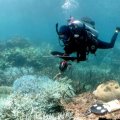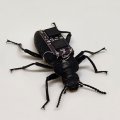A University of Queensland study could revolutionise treatment programs for people suffering speech problems following a serious head injury.
The study has revealed for the first time exactly how the lips and tongue work in people who have speech difficulties resulting from traumatic brain injury (TBI).
Speech pathology and audiology research officer Justine Goozee's PhD thesis is believed to be the first to use electropalatography (EPG) and electromagnetic articulography (EMA) instruments with people suffering dysarthria as a result of TBI.
Dysarthria is a neuro-motor speech disorder caused by nervous system damage. It affects the motor control of muscles used for speech and often results in reduced intelligibility.
"Dysarthria is a major problem, particularly for young people affected by TBI, because communication difficulties can really affect their ability to reintegrate into society," Dr Goozee said.
In the past, people have had to use limited x-ray based techniques to work out how the tongue moves during speech, she said.
But the safer, more comprehensive physiological assessments done by the EPG and EMA systems identify underlying problems by showing exactly how the tongue moves. "They provide direct and objective information which is more helpful than the subjective information gathered through traditional methods (listening to and watching the patient speak)," she said.
The EPG system uses an artificial palate containing an array of touch-sensitive electrodes which register where and when the tongue touches the palate during different speech sounds. The EMA system uses electromagnetic fields to track the movement of tiny receiver coils placed on the tongue, lips and jaw.
"With the EPG and EMA systems, we can characterise the lip and tongue deficits to determine their nature and severity," Dr Goozee said.
"It was groundbreaking research because that type of information hasn't been available before, particularly for people who've had a TBI. Now we can use this information to develop treatment goals and programs which identify and treat the underlying problem."
The EPG and EMA systems have been used for assessment before, but Dr Goozee and researchers in the Motor Speech Research Unit are working on using them to create a biofeedback program, whereby patients can immediately see their results on a screen and improve their performance by watching it.
"Biofeedback programs mean patients could take ownership of their own therapy and improvement, rather than relying totally on a therapist telling them what to do," Dr Goozee said.
Dr Goozee's research was funded by CONROD, the NHMRC and an Australian Postgraduate Award and was supervised by Professor Bruce Murdoch and Dr Deborah Theodoros.
Media: for more information contact Dr Justine Goozee (telephone 07 3365 3097 or email j.goozee@mailbox.uq.edu.au) or Helen Lewis in the UQ Communications office (telephone 07 3365 2619) or email communications@mailbox.uq.edu.au.
.jpg)


